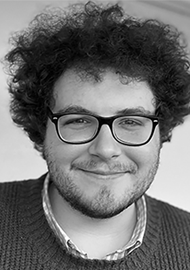An art exhibition examining sight loss opened as part of the Wandsworth Arts Fringe in London on 10 June. Entitled “Do you see what I see?”, the exhibition includes pieces by artists who are part of the Windows of the Soul project and contains braille art, traditional paintings, print work and other examples of work by or with visually impaired people describing what they see to a professional artist.
The Windows of the Soul artists were charged by two ophthalmologists, Caroline Kilduff and Siegfried Wagner, to create an exhibition of artwork to raise awareness of the realities of sight loss. Lindsey Whitelaw, an exhibiting artist, became involved due to her fascination with the project, and the feeling that she could create different versions of one painting as responses to how visually impaired people saw her work.
Lindsey said: “I have painted all my life and also had a career as a Landscape Architect which involved community engagement, promoting general health and wellbeing through environmental improvements. With this body of work I have had the opportunity to direct my art practice along a similar path.
I have met some truly amazing people with such energy and enthusiasm for life, it has been life-changing for me to see such positives come from those with eye conditions.”
Lindsey initially called on volunteers to describe how they saw the world with their varying degrees of visual impairment. As she explains: “Due to the pandemic, we mostly communicated over the phone and email. It has been an unexpected and inspiring process as from their responses I have made work which illustrates how sight impairment can enhance rather than hamper the artistic experience.”
Lindsey’s process began when she sent a textile collage entitled New China to Pat, who is totally blind from retinitis pigmentosa, and Michael, who has diminished vision due to optic neuropathy.
Of their responses to her work, Lindsey said: “They both described ‘word pictures’, which I then translated in paint as Pat’s New China, a birch tree, and Michael’s nautical scene with Blue Peter flags. Both were vastly different, and yet a version of the original.”
Three other paintings were sent to Samantha, who has diabetic retinopathy, with sporadic voids in her vision. She also had a cataract in her right eye; after surgery, the lens pocket thickened and despite being ‘polished’, it has not made a difference to her vision. Samantha says that life is much more interesting since she lost her vision as she “makes things up”.
A fascinating result of Samantha’s vision impairment is the way in which she engages with Lindsey’s art. Samantha saw a clown’s face when looking at Lindsey’s original Iomani painting; it intended to depict a Cyprus village house interior. When looking at Lindsey's depiction of a set of Allen keys in Workshop One, Samantha saw a tarantula emerging from a pistol:

Workshop - Samantha Leftwich by Lindsey Whitelaw
And when viewing Lindsey's painting of almost leaf-less trees with a white and blue backdrop in Blue Trees Old Town, to Samantha, the work appeared as an orange disc crossed with blood vessel-like branches – looking not dissimilar to an eye scan:

Blue Trees Old Town - Samantha Leftwich by Lindsey Whitelaw
People with visual impairments continue to influence Lindsey’s work. Aleid was diagnosed with ocular myasthenia gravis: when looking far away, her vision seems to ‘slide‘, so one object floats off to produce two objects, with the second one appearing to the right, and higher up. She visited Lindsey’s house and was able to see her original painting ‘Blue Trees Old Town 2’, adjacent to a pile of books on a table nearby. She saw the books and a pink carrier bag nearby floating up onto the trees, and when seen on a blank wall, the trees themselves floated up to the right:

Aleid's Floating Books by Lindsey Whitelaw
Anne has autosomal recessive optic nerve degeneration, and was registered blind in the 1990s. She can see vague shapes but no detail and her vision, in her own words, could be described as largely a feat of imagination. Her response to ‘Workshop One’ was notable, as she saw it as ominous and dark with a striped background, whereas the ‘Blue Trees’ and ‘Iomani’ are much more subdued, soft, and misty.
Lindsey will be exhibiting at Nine Elms in London until Saturday 25th June. Her work can be found in the gallery, as well as the Windows of the Soul website here.
Follow Lindsey on Instagram: @lindseywhitelaw_art




